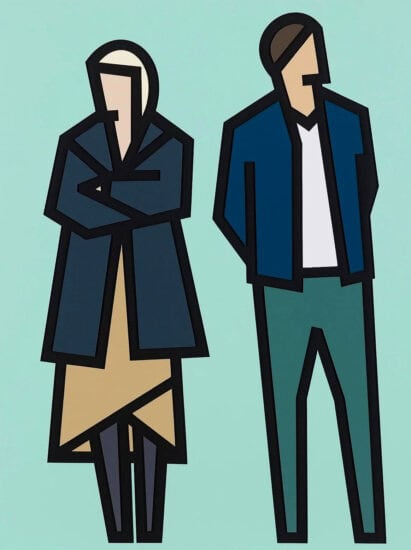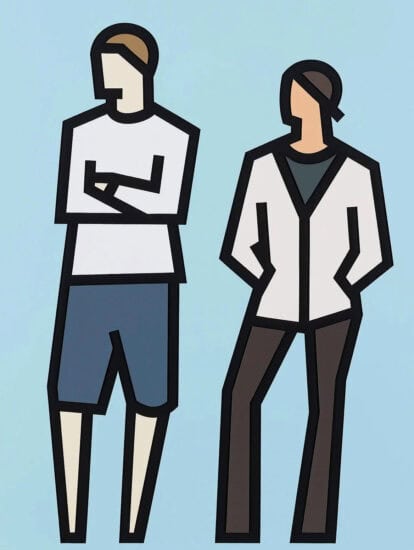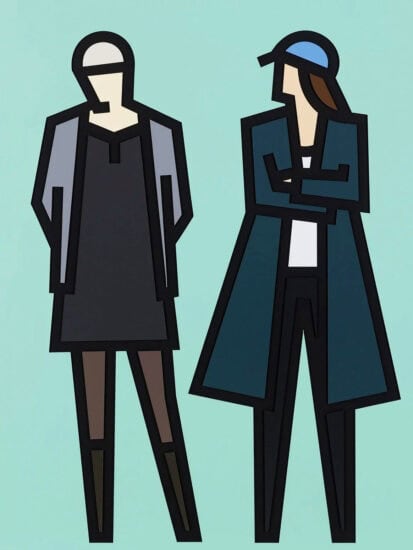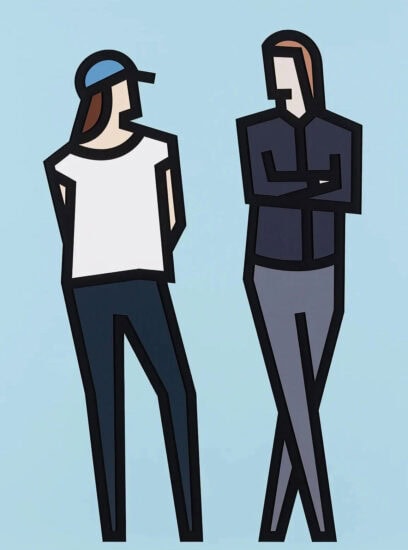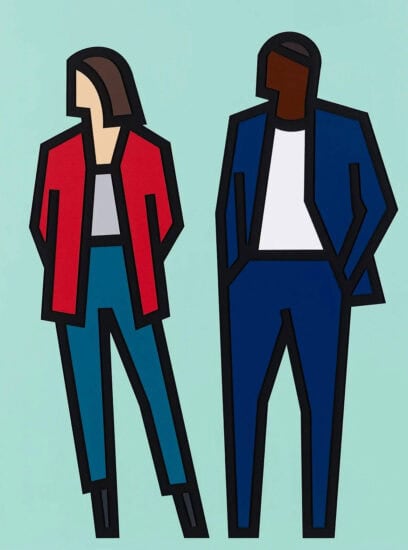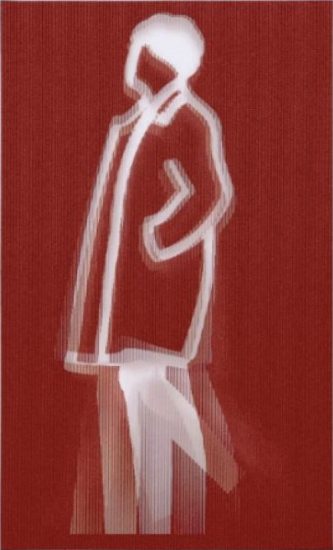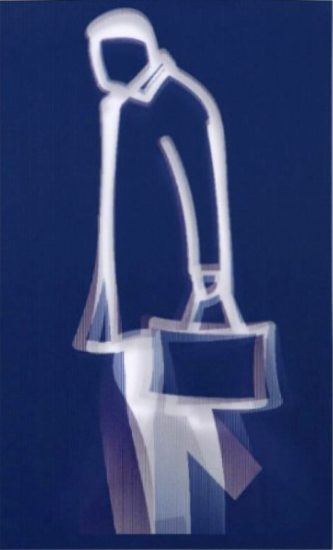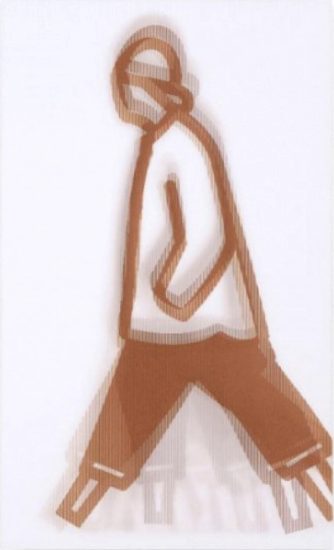Julian Opie Biography
Born in London in 1958, Julian Opie studied at Goldsmiths, University of London. Where he emerged as part of the New British Sculpture movement in the 1980s. He was exhibiting steel sculptures to create replicas of everyday objects. He later produced a series of box-like sculptures that seemed to echo the minimalism of Donald Judd and Carl Andre. In the ‘90s, these became more architectural, but the early 2000s saw him exploring representations of the figure in metal, which challenged traditional perceptions of portraiture and landscape art.
In 2002 Opie was commissioned by BALTIC where he produced Escaped Animals, transforming his drawings into vinyl. He re-interpreted the notion of the ordinary, representing each animal in silhouettes against a distinct colored background. Similar to functional road signs, these images are designed to be legible, yet leave the interpretation to its audiences.
Opie is best known for his reductive and heavily stylized portraits with geometrical lines and fragmentary visual language. Rooted in Pop Art and inspired by traditional portraiture, Japanese woodblock prints, and Egyptian hieroglyphics, Opie pursued his path by discovering and experimenting through different mediums across painting, sculpture, and digital work, including his iconic walking figures. By sculpting subjects in free-standing form, audiences are allowed to reconsider their relationship to consider space, movement, and representation.
Opie’s work has been exhibited extensively worldwide, from prestigious institutions like the Tate Gallery and Museum of Modern Art to public spaces, where his art engages with a broad audience. His works are collected but not limited to the collections of England’s Arts Council, the Institute of Contemporary Art, Boston, the Stedelijk Museum, the National Portrait Gallery in London, and the National Museum of Modern Art in Tokyo.
Browse Julian Opie Catalogue Raisonnés Online.
